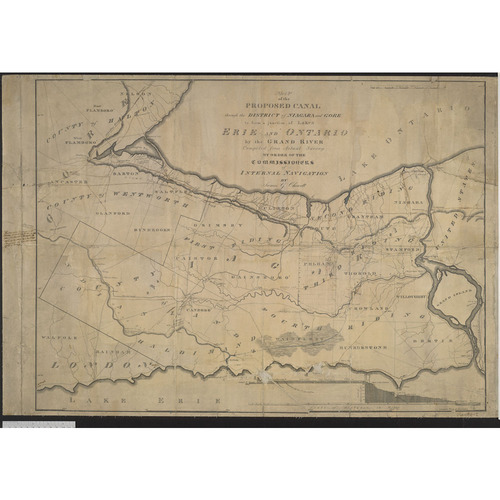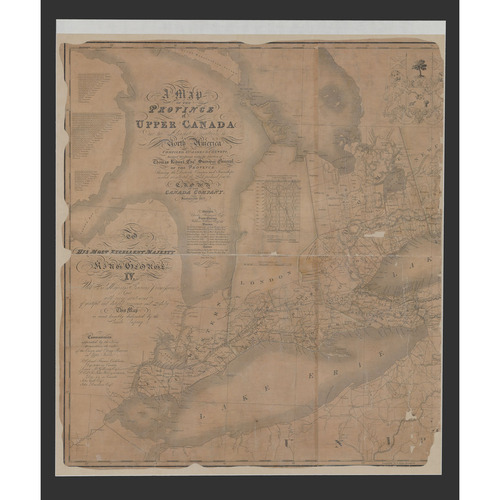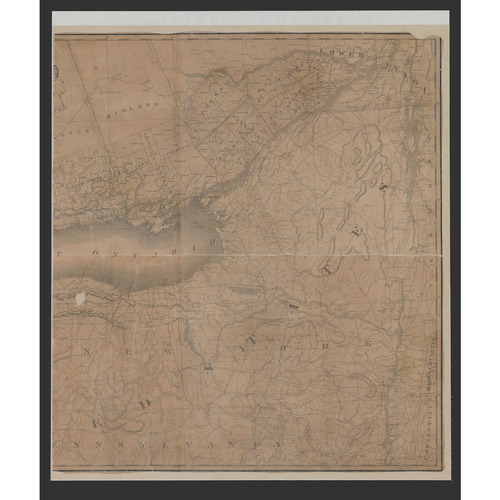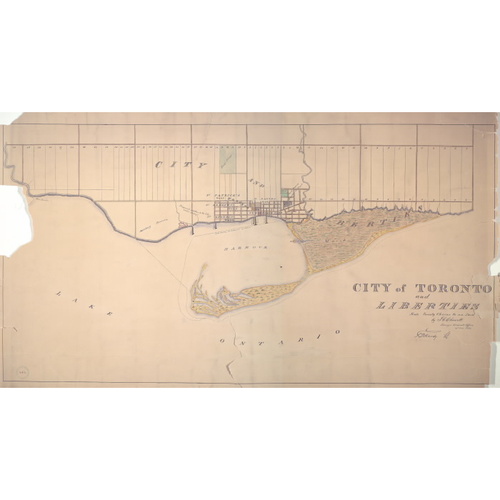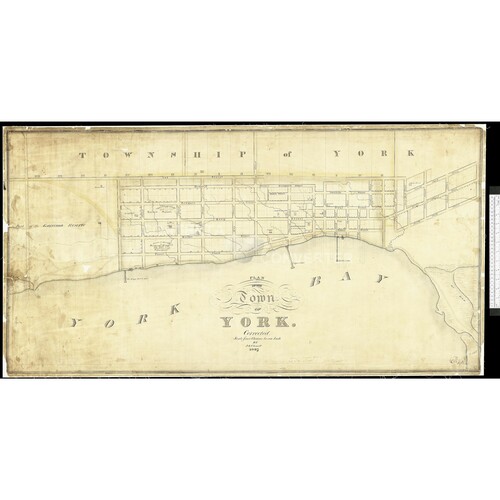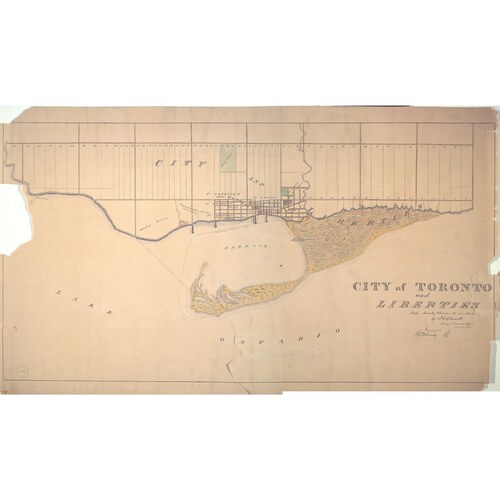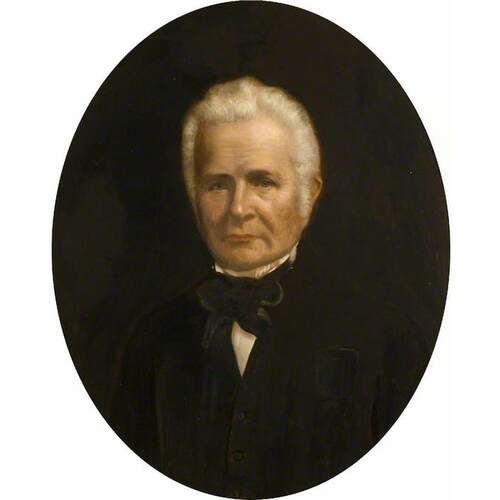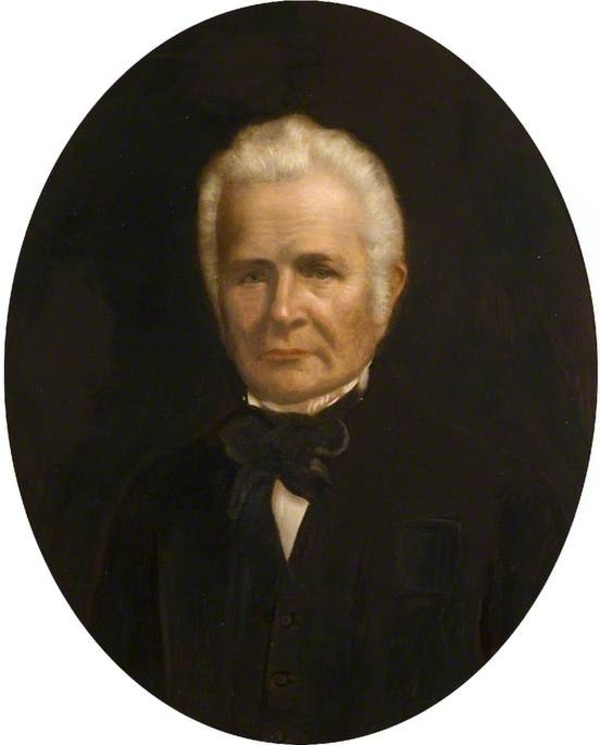
Source: Link
CHEWETT, JAMES GRANT, surveyor, architect, contractor, and financier; b. 9 Nov. 1793 at New Johnstown (Cornwall), Upper Canada, second son of William Chewett* and Isabella Macdonell (McDonald); d. 7 Dec. 1862 at Toronto, Canada West.
Although James Grant Chewett’s family moved from Cornwall to the new provincial capital of York (Toronto) in 1797, he was educated at his birthplace by John Strachan, thus coming into contact with many of those who later would form the Family Compact. About 1810 he entered the surveyor general’s office where his father was deputy surveyor general (senior surveyor and draftsman). James’ 30-year career in that office was interrupted by service during the War of 1812 as a lieutenant in the 3rd York militia regiment, commanded by his father; he fought at York and was paroled after the capture of the town in April 1813. Chewett was named a deputy surveyor in 1819, and became the deputy surveyor general on his father’s retirement in 1832. When the capital was moved to Kingston in 1841 he retired with a pension of £135 per annum. He was responsible for the surveys of several townships located north and west of York, around Lake Simcoe, and near Kingston.
Chewett also displayed talents as an architect and contractor. In 1829 he designed part of the legislative buildings at York, and in 1832 he constructed as a private venture the town’s first office building complex, the Chewett Block, on land he owned. He became a member of the building committee for St James’ Church (Church of England) in York in 1832, and of the committees which superintended the construction of a new Home District jail (completed in 1840) and the Provincial Lunatic Asylum (1845). His plans for the St Lawrence Market (1831) were rejected.
In 1833 Chewett was appointed a justice of the peace for the Home District and, with Hugh Richardson and William Chisholm*, to the commission superintending harbour improvements. When a permanent harbour commission was established in 1850 he was the appointee of the provincial government and was elected chairman by his fellow commissioners. During his chairmanship the first efforts were made to narrow and stabilize the Western Gap by land fill. He acted as curator for the Literary and Philosophical Society of Upper Canada in the early 1830s. He also served Toronto as an alderman for St George’s ward in 1838–39.
Chewett displayed a lifelong interest in Toronto’s financial development. He was one of the incorporators in 1833 of the town’s first insurance company, the British America Fire and Life Assurance Company. In 1855 he became chairman of the provisional board and one of the original directors of the Canada Permanent Building and Savings Society (later the Canada Mortgage Corporation). Following his retirement from government service Chewett was elected to the board of directors of the Bank of Upper Canada; his financial conservatism enabled him to become vice-president in 1849 but he resigned in 1856 in disagreement with the policies which were to lead to the bank’s collapse in 1866. He became the first president of the Bank of Toronto in 1856: his conservative and cautious nature provided the ideal leadership for a fledgling institution in a time of financial difficulties. He retained the presidency until his sudden death in 1862. To his children he left a substantial estate in the form of commercial property in Toronto and $76,000 in stocks in local financial institutions.
Chewett had married Martha Smith Robison of Kingston in 1825. They had two sons and one daughter; the eldest, William Cameron, though trained in medicine, became a prominent businessman in Toronto.
A trusted, talented, and industrious member of Upper Canada’s early Toronto-based ruling group, Chewett’s leadership and experience were often sought after for developments in that city. His many-sided career, especially his entrance into the financial world after 1841, demonstrate that members of the Family Compact did not necessarily become inactive with responsible government. Many, such as Chewett, were in fact able to turn their interests and ambition from government office to financial and commercial ventures and to enjoy much the same success.
PAO, RG 1 (catalogue entries for J. G. Chewett); RG 22, ser.7, 14–33. York County Surrogate Court (Toronto), will of James Grant Chewett. Globe, 9 Dec. 1862. Town of York, 1793–1815 (Firth). Town of York, 1815–34 (Firth). Armstrong, Handbook of Upper Canadian chronology. Brown’s Toronto city and Home District directory, 1846–7 (Toronto, 1846). Brown’s Toronto general directory, 1856 . . . (Toronto, [1856]). Chadwick, Ontarian families. The city of Toronto and the Home District commercial directory and register with almanack and calendar for 1837 . . . , comp. George Walton (Toronto, [1837]). York commercial directory, street guide, and register, 1833–4 . . . , comp. George Walton (York [Toronto], [1833]). D. C. Masters, The rise of Toronto, 1850–1890 (Toronto, 1947). Middleton, Municipality of Toronto. Robertson’s landmarks of Toronto, I, 356, 362. W. A. Sims, “James Grant Chewett,” Assoc. of Ont. Land Surveyors, Annual report (Toronto), no.36 (1921), 112–17.
Cite This Article
Robert J. Burns, “CHEWETT, JAMES GRANT,” in Dictionary of Canadian Biography, vol. 9, University of Toronto/Université Laval, 2003–, accessed December 14, 2025, https://www.biographi.ca/en/bio/chewett_james_grant_9E.html.
The citation above shows the format for footnotes and endnotes according to the Chicago manual of style (16th edition). Information to be used in other citation formats:
| Permalink: | https://www.biographi.ca/en/bio/chewett_james_grant_9E.html |
| Author of Article: | Robert J. Burns |
| Title of Article: | CHEWETT, JAMES GRANT |
| Publication Name: | Dictionary of Canadian Biography, vol. 9 |
| Publisher: | University of Toronto/Université Laval |
| Year of publication: | 1976 |
| Year of revision: | 1976 |
| Access Date: | December 14, 2025 |


